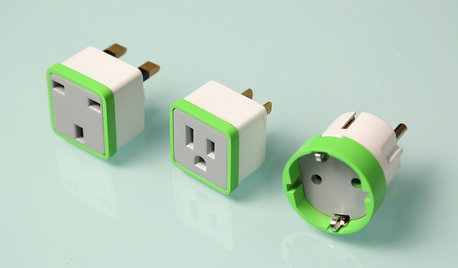Monitoring kwh from A/C Unit
cebury
12 years ago
Related Stories

HOME TECHPlug Into Home Power Monitors That Pay for Themselves
Stop throwing away money on wasted electricity with help from new monitors that work with your phone or computer
Full Story
FEEL-GOOD HOME12 Very Useful Things I've Learned From Designers
These simple ideas can make life at home more efficient and enjoyable
Full Story
COLORPaint-Picking Help and Secrets From a Color Expert
Advice for wall and trim colors, what to always do before committing and the one paint feature you should completely ignore
Full Story
WHITE KITCHENS4 Dreamy White-and-Wood Kitchens to Learn From
White too bright in your kitchen? Introduce wood beams, countertops, furniture and more
Full Story
KITCHEN DESIGNKitchen of the Week: Grandma's Kitchen Gets a Modern Twist
Colorful, modern styling replaces old linoleum and an inefficient layout in this architect's inherited house in Washington, D.C.
Full Story
LIVING ROOMSHow to Convert Your Wood-Burning Fireplace
Learn about inserts and other options for switching your fireplace from wood to gas or electric
Full Story
DECORATING GUIDES8 Reasons to Jump Off the DIY Bandwagon
You heard right. Stop beating yourself up for not making stuff yourself, and start seeing the bright side of buying from others
Full Story
HOME OFFICESPhoto Flip: 95 Deskscape Dazzlers
Whether you work from home or just need a stylish space in which to pay the bills, these office spaces make the grade
Full Story
MOST POPULAR33 Magic Household Cleaning Tips
Houzzers from around the world share their tips for transforming housework into child’s play
Full Story
DECORATING GUIDESHouzz Tour: Parisian Flat’s Redo Revolves Around a Terrace View
A Parisian apartment is transformed from a dark and closed space into an open, airy and colorful home
Full Story








Ron Natalie
brickeyee
Related Professionals
North Versailles Electricians · Everett General Contractors · Hamilton Square General Contractors · Medway General Contractors · Norman General Contractors · Salem General Contractors · San Carlos Park General Contractors · University Heights General Contractors · Phoenix Solar Energy Systems · Reedley Solar Energy Systems · Hialeah Gardens Home Automation & Home Media · Pittsburgh Home Automation & Home Media · San Fernando Home Automation & Home Media · Surfside Home Automation & Home Media · Tarpon Springs Home Automation & Home MediaceburyOriginal Author
kurto
weedmeister
brickeyee
ceburyOriginal Author
ceburyOriginal Author
brickeyee
ceburyOriginal Author
Ron Natalie
ceburyOriginal Author
brickeyee
ceburyOriginal Author
brickeyee
weedmeister